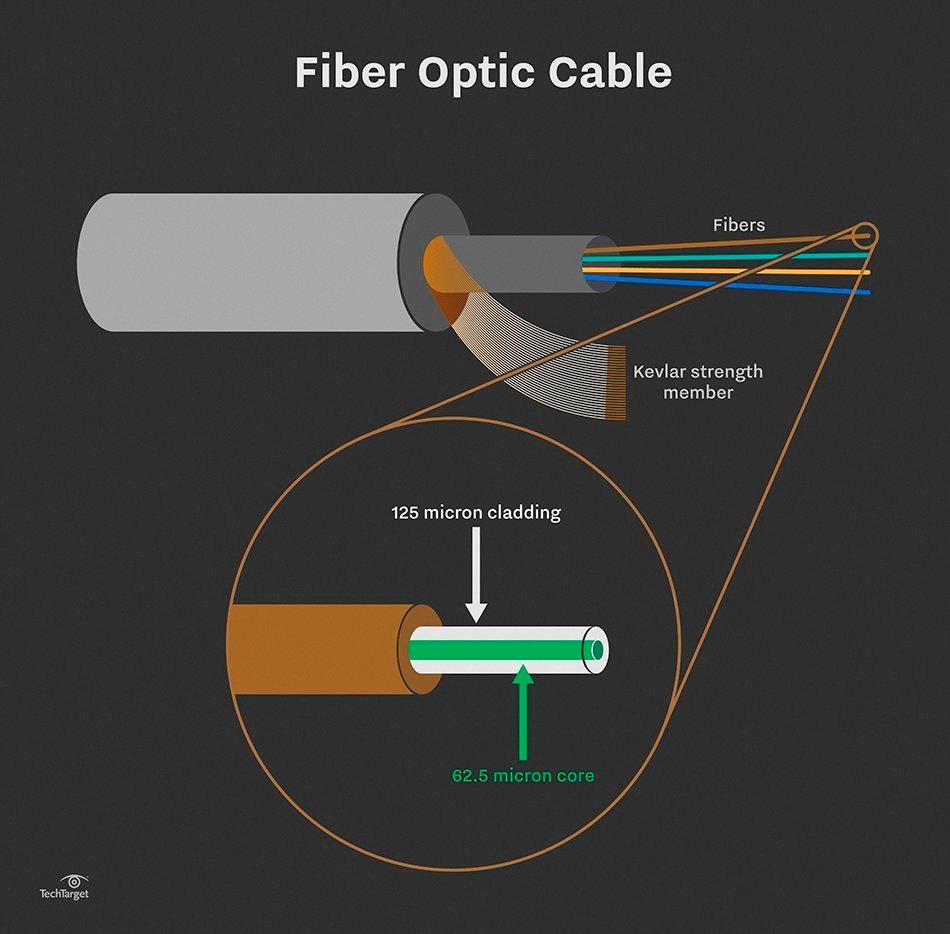What is fiber optics?
We design and install fiber optic cabling systems after we carefully determine the correct cable, connectors and equipment for your applications.
Fiber optics, or optical fiber, refers to the technology that transmits information as light pulses along a glass or plastic fiber.
A fiber optic cable can contain a varying number of these glass fibers -- from a few up to a couple hundred. Another glass layer, called cladding, surrounds the glass fiber core. The buffer tube layer protects the cladding, and a jacket layer acts as the final protective layer for the individual strand.
How fiber optics works
Fiber optics transmit data in the form of light particles -- or photons -- that pulse through a fiber optic cable. The glass fiber core and the cladding each have a different refractive index that bends incoming light at a certain angle.
When light signals are sent through the fiber optic cable, they reflect off the core and cladding in a series of zig-zag bounces, following a process called total internal reflection. The light signals do not travel at the speed of light because of the denser glass layers, instead traveling about 30% slower than the speed of light.
Fiber optic cables are now able to support up to 10 Gbps signals. Typically, as the bandwidth capacity of a fiber optic cable increases, the more expensive it becomes.

Copper wire cables were the traditional choice for telecommunication, networking and cable connections for years. Over time, however, fiber optics became a common alternative. Most telephone company long-distance lines are now made of fiber optic cables.
Computer networking is a common fiber optics use case due to optical fiber's ability to transmit data and provide high bandwidth. Similarly, fiber optics is frequently used in broadcasting and electronics to provide better connections and performance.
Optical fiber carries more information than conventional copper wire, due to its higher bandwidth and faster speeds. Because glass does not conduct electricity, fiber optics is not subject to electromagnetic interference, and signal losses are minimized.
Internet and cable television are two of the more commonly found usages of fiber optics. Fiber optics can be installed to support long-distance connections between computer networks in different locations.
Want To Learn More About Products and Solutions?
Complete the form below to tell us your business needs. A representative will contact you shortly.
 Demos
Demos  Colors
Colors 
 Docs
Docs  Support
Support 

